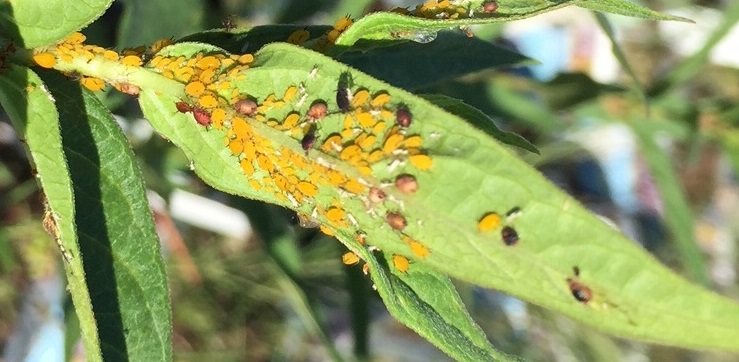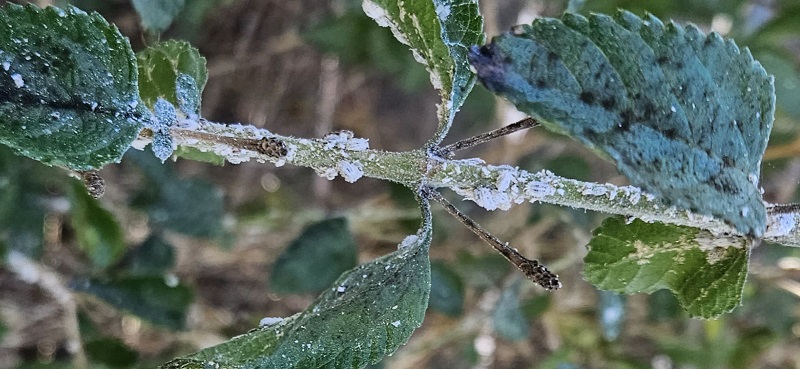As our weather becomes hotter and drier, grasshoppers will become plentiful. Studies have shown that they are more plentiful and more voracious feeders in hot, dry years. When we have cool, wet springs, they are affected by a naturally occurring fungal disease that can control the population a bit. Because we have little doubt that this summer will be hot and dry, NOW is the time to start control of these destructive insects with Nosema locustae, a single-celled microsporidium protozoan that is impregnated on wheat bran and broadcast in affected and outlying areas to control grasshopper populations.
Traditional chemical control is difficult for grasshoppers populations, as the thick chitin covering their bodies is difficult to penetrate, and you have to actually hit the grasshopper itself directly with the chemical for it to be effective.
The best organic control for grasshoppers begins when the first tiny “nymphs” appear. They will be in what is called the third or fourth “instar”, in which they are under ¾” long. Timing is critical, as the grasshopper’s growth in the third instar has reached a body mass that will allow the spores of the Nosema to reproduce.
Nolo Bait, a commercially available form of Nosema locustae spores, is impregnated on bran, and should be distributed on and around grasshopper nesting sites at the rate of 1-2 pounds per acre. It is best distributed by using a hand-seeder, in the morning hours, with no rain expected for a day or so. If the area to be protected from grasshoppers is surrounded by mown fields, allowing the perimeter to grow up a bit before treating the area with Semaspore is recommended. Due to the grasshoppers migratory nature, it is also advised to inoculate your area frequently throughout the season.
The first release of Nolo Bait in the spring is called an “inoculative release”. This will begin the disease process in the population present at that time. The infected grasshoppers will decrease feeding and become lethargic. Healthy grasshoppers will feed on the infected grasshoppers, passing the disease on to the rest of the population this way. Making the bait available to incoming migratory grasshoppers later in the season will increase control, especially in high populations.
The most obvious results may be seen the season after the initial inoculation. This is due to decreased egg laying capability and infection of the new spring hatch. Repeating applications annually and even throughout the season is recommended for the best control.




